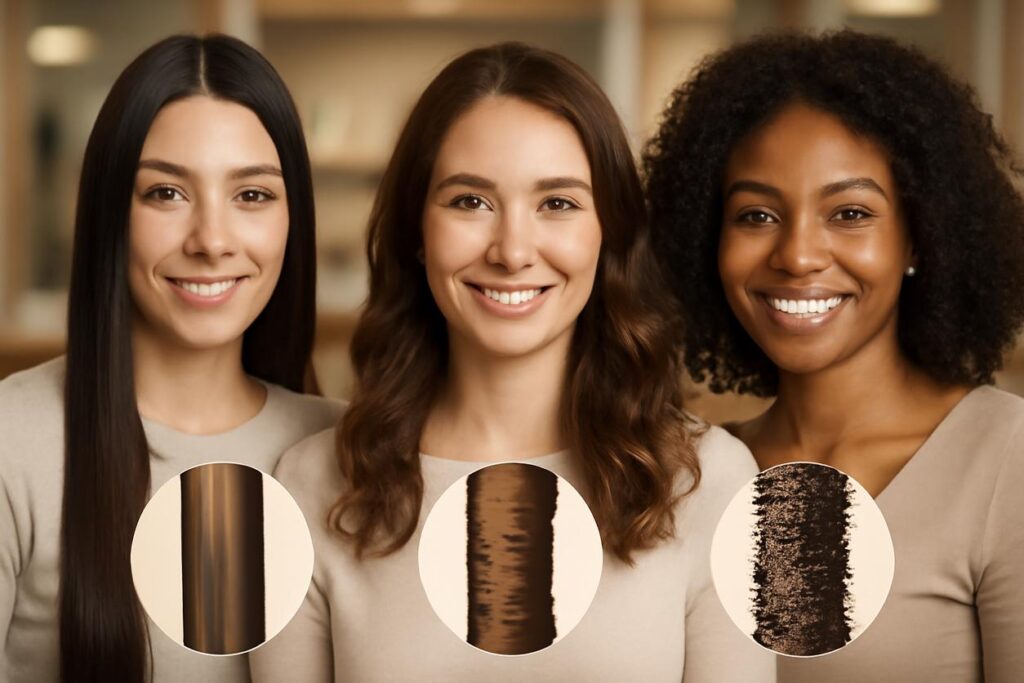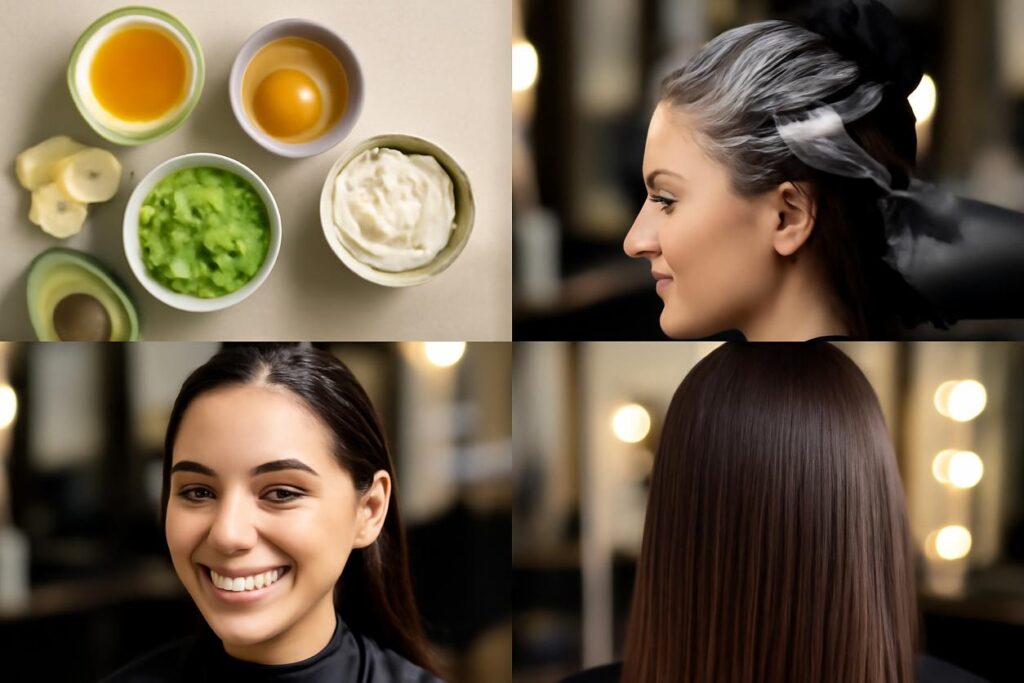The Ultimate Guide to Hair Porosity: Test, Treat, and Transform Your Hair
Table of Contents
- What is hair porosity?
- Why porosity matters for hair health
- How to test your hair porosity at home (3 simple methods)
- Interpreting results: low, medium, and high porosity explained
- Daily care routines by porosity level
- Ingredients and formulations to favor or avoid
- Common mistakes and how to fix them
- Quick care plans: 7-day and 30-day routines by porosity
- Visual aids and decision flowchart (how to choose products)
- FAQ — short answers to frequent porosity questions
- Further reading and resources
What is hair porosity?
Have you ever wondered why a hair product that your friend swears by leaves your hair feeling greasy or, conversely, does nothing at all? The answer often lies in a single, crucial factor: hair porosity. In simple terms, hair porosity is your hair’s ability to absorb and retain moisture. It’s a fundamental characteristic of your strands, determined by the structure of your hair’s outermost layer, the cuticle. Understanding your specific hair porosity is the first step toward unlocking a hair care routine that actually works for you, leading to healthier, more manageable hair.
Why porosity matters for hair health
Knowing your hair porosity is like having a roadmap for your hair care journey. It dictates how oils, water, and hair products interact with your strands. When you select products and techniques tailored to your porosity level, you can effectively manage common issues like frizz, dryness, and product buildup. Instead of guessing, you can make informed choices that ensure your hair gets the right amount of moisture—and, more importantly, holds onto it.
Cuticle structure and how it affects moisture
Imagine the cuticle layer of your hair as shingles on a roof. The arrangement of these “shingles” determines your hair porosity.
- Low Porosity Hair: The cuticles are tightly packed and lie flat. This creates a strong barrier that resists moisture, making it difficult for water and conditioning products to penetrate the hair shaft.
- Medium Porosity Hair: The cuticles are looser and slightly raised. This is often considered the ideal state, as it allows moisture to enter the hair shaft easily while still retaining it effectively.
- High Porosity Hair: The cuticles are widely spaced, raised, or even have gaps from damage. This type of hair absorbs moisture very quickly but loses it just as fast, much like a roof with missing shingles. This can be an inherent trait or the result of chemical processing, heat styling, or environmental damage.
For an in-depth look at the science, you can explore detailed information on hair structure.
How to test your hair porosity at home (3 simple methods)
You don’t need a lab to determine your hair porosity. These simple, at-home tests can give you a clear indication. For the most accurate results, perform these tests on clean, dry hair with no product in it.
The float test — step-by-step
This is the most popular method for assessing hair porosity.
- Fill a clear glass with room-temperature water.
- Take a single strand of clean hair (from your brush or comb is fine).
- Place the strand in the glass of water and observe it for 2-3 minutes.
- If it floats at the top: You likely have low porosity hair.
- If it sinks slowly or hovers in the middle: You likely have medium porosity hair.
- If it sinks quickly to the bottom: You likely have high porosity hair.
The slip test — step-by-step
This test relies on how your hair feels to the touch.
- Take a single strand of hair between your thumb and index finger.
- Slide your fingers up the strand, from the end towards your scalp.
- If it feels smooth: You likely have low porosity hair.
- If you feel slight bumps along the way: You likely have medium porosity hair.
- If it feels rough and uneven: You likely have high porosity hair.
The strand inspection — what to look for
Often, your hair’s everyday behavior is the biggest clue to its porosity.
- Low Porosity Hair often appears healthy and shiny, but products tend to sit on top of it. It takes a long time to get fully wet in the shower and also takes a long time to air dry.
- High Porosity Hair tends to look and feel dry, may be prone to frizz, and absorbs water instantly. A key sign is that it air-dries very quickly.
Interpreting results: low, medium, and high porosity explained
Let’s summarize the characteristics of each hair porosity type:
| Porosity Type | Characteristics | Common Challenges |
|---|---|---|
| Low Porosity |
|
Getting moisture into the hair shaft; avoiding greasy, weighed-down hair. |
| Medium Porosity |
|
Maintaining balance; can become high or low porosity with damage or improper care. |
| High Porosity |
|
Retaining moisture; strengthening the hair structure to prevent damage. |
Daily care routines by porosity level
Once you’ve identified your hair porosity, you can tailor your routine. Updated strategies for 2025 and beyond focus on ingredient-led care that directly addresses the needs of the hair cuticle.
Low porosity: best practices and product texture recommendations
The goal is to get moisture into the hair without weighing it down.
- Use lightweight products: Look for hair milks, lotions, and light, water-based leave-in conditioners. Avoid heavy butters and thick creams.
- Apply heat: When deep conditioning, use a steamer, heat cap, or even a warm towel wrapped around your head. Heat gently lifts the cuticles, allowing the product to penetrate.
- Clarify regularly: Since this hair type is prone to buildup, use a clarifying shampoo once or twice a month to remove residue.
- Apply products to damp hair: Apply conditioners and stylers when your hair is damp, not soaking wet, to help with absorption.
Medium porosity: maintenance and balanced routines
Your hair is relatively low-maintenance, so the focus is on preservation.
- Balance is key: Alternate between moisturizing and protein-based deep conditioners as needed, but don’t overdo either.
- Avoid extremes: Limit excessive heat styling and chemical treatments that can alter your hair’s ideal porosity.
- Listen to your hair: Pay attention to how your hair responds. If it feels a bit dry, add more moisture. If it feels mushy or overly soft, a light protein treatment can help.
High porosity: sealing strategies and strengthening tips
The primary goals are to fill the gaps in the cuticle and seal in moisture.
- Layer your products: Use the LOC (Leave-in, Oil, Cream) or LCO (Leave-in, Cream, Oil) method. This layering technique helps trap moisture inside the hair shaft for longer.
- Incorporate protein: Regular protein treatments help patch up the gaps in the cuticle, strengthening the hair and improving moisture retention over time. Look for ingredients like hydrolyzed keratin or silk amino acids.
- Use anti-humectants in high humidity: In very humid weather, hair can absorb too much moisture from the air, causing frizz. Anti-humectant styling products can help block this excess moisture.
- Rinse with cool water: A final rinse with cool water after conditioning can help to flatten the cuticle, reducing frizz and locking in moisture.
Ingredients and formulations to favor or avoid
Understanding key ingredient categories is essential for choosing the right products for your hair porosity.
Humectants, emollients, proteins — when to use them
| Ingredient Type | Function | Best For… | Examples |
|---|---|---|---|
| Humectants | Attract water from the atmosphere into the hair shaft. | Low Porosity (in moderation), High Porosity (when sealed in). | Glycerin, honey, aloe vera, panthenol. |
| Emollients | Form a protective barrier to smooth the cuticle and lock in moisture. | Low Porosity (lightweight oils), High Porosity (heavier butters/oils). | Shea butter, argan oil, jojoba oil, mineral oil. |
| Proteins | Temporarily patch and strengthen the hair cuticle. | High Porosity (regularly), Medium Porosity (occasionally), Low Porosity (sparingly). | Hydrolyzed wheat/silk/keratin protein, amino acids. |
Common mistakes and how to fix them
- Mistake (Low Porosity): Piling on heavy oils and butters that just sit on the hair.
The Fix: Switch to lightweight, water-based products. Use a clarifying shampoo to remove buildup and apply deep conditioners with gentle heat. - Mistake (High Porosity): Using moisturizing products without sealing them in.
The Fix: Always follow your leave-in conditioner with a cream and/or an oil to seal the cuticle and prevent the moisture from escaping. - Mistake (All Types): Overusing protein, leading to stiff, brittle hair.
The Fix: Reduce the frequency of protein treatments. Focus on moisture-based deep conditioners until your hair’s softness and elasticity return.
Quick care plans: 7-day and 30-day routines by porosity
Here are some sample weekly schedules to get you started.
| Porosity Type | 7-Day Sample Routine | 30-Day Outlook |
|---|---|---|
| Low Porosity | Day 1: Wash & deep condition with heat. Day 4: Lightly re-moisturize with a water-based mist if needed. Focus: Avoid daily product application to prevent buildup. | Incorporate a clarifying wash on Week 1 and Week 3. Focus on moisture balance in between. Minimal protein needed. |
| Medium Porosity | Day 1: Wash & condition. Day 4: Co-wash or refresh as needed. Focus: Maintain a simple and consistent routine. | Alternate a moisturizing deep conditioner one week with a light protein treatment the next, as needed. |
| High Porosity | Day 1: Pre-shampoo oil treatment, wash, deep condition (with protein), apply LOC/LCO. Day 4: Refresh with leave-in and seal with oil. Focus: Consistent moisture and sealing. | Plan for weekly deep conditioning, alternating between protein-heavy and moisture-heavy treatments. Be gentle with handling. |
Visual aids and decision flowchart (how to choose products)
Since images aren’t an option, use this text-based flowchart to guide your product choices:
Step 1: What is my hair porosity?
(Answer from your at-home tests: Low, Medium, or High)
Step 2: Based on my porosity, what is my main goal?
- If LOW POROSITY, my goal is PENETRATION.
- → Look for product labels with terms like “lightweight,” “hydrating,” or “lotion.”
- → Do the ingredients include humectants like glycerin or aloe vera near the top? Yes? Good.
- → Does it contain heavy butters like shea or cocoa butter? Yes? Avoid for daily use.
- If MEDIUM POROSITY, my goal is MAINTENANCE.
- → Look for product labels with terms like “balancing,” “moisturizing,” or “normal.”
- → You can use a wide range of products. Focus on not overdoing protein or heavy oils.
- If HIGH POROSITY, my goal is SEALING & STRENGTHENING.
- → Look for product labels with terms like “repairing,” “strengthening,” “rich,” or “cream.”
- → Do the ingredients include proteins and rich emollients like shea butter, castor oil, or coconut oil? Yes? Good.
- → Does the routine include a leave-in, a cream, and an oil? Yes? Perfect.
FAQ — short answers to frequent porosity questions
Can my hair porosity change?
Yes. While you are born with a certain hair porosity, factors like heat damage, bleaching, chemical treatments, and even environmental exposure can increase your hair’s porosity over time.
Is one hair porosity type better than another?
Not at all. Each type has its own unique needs. Healthy hair is possible at every porosity level; the key is understanding and catering to those needs.
Does hair texture (e.g., curly, straight) determine porosity?
No. Hair texture and hair porosity are two separate things. You can have fine, low porosity hair or coarse, high porosity hair. All combinations exist.
How often should I test my hair porosity?
It’s a good idea to re-test every 3-4 months, or whenever you notice a significant change in how your hair behaves, especially after a chemical service like coloring or relaxing.
Further reading and resources
For those looking to dive deeper into hair science and care, these resources offer valuable information:
- Scientific Research: The Porosity research hub at the National Center for Biotechnology Information offers peer-reviewed studies on hair properties.
- Hair Biology: For a comprehensive understanding of the physical properties of hair, explore the Wikipedia article on hair structure.
- Practical Advice: For more hands-on tips and hair care guides, Rich Hair UK provides a wealth of information for various hair types.






